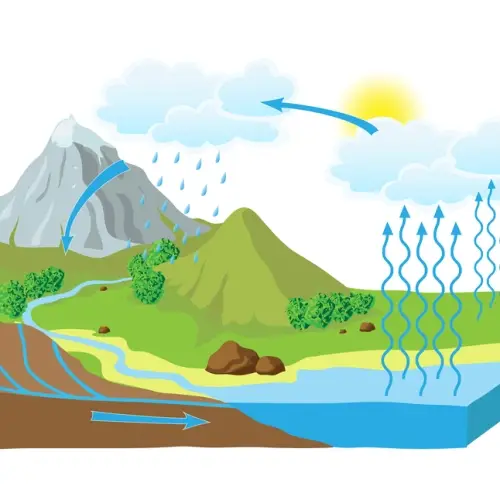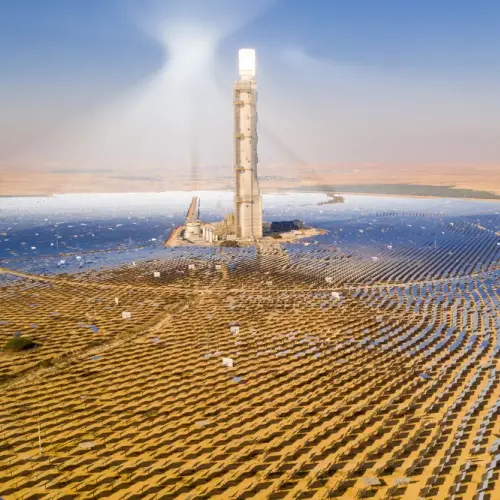
One way to classify thermodynamic processes is to differentiate them in terms of their energy exchange with the environment. In this context, the processes are divided into endothermic and exothermic.
Endothermic processes are characterized by the absorption of energy from the environment, generally in the form of heat, resulting in a decrease in environmental temperature. On the other hand, exothermic processes involve the release of energy into the environment, which causes an increase in temperature.
Definitions
Endothermic processes : An endothermic process is one that absorbs energy from the environment, generally in the form of heat. This means that for the process to occur, it needs an input of energy. As a result, the temperature of the environment decreases.
Exothermic processes : An exothermic process is one that releases energy to the environment, generally in the form of heat. This means that the energy stored in the reactants is released during the formation of the products, causing an increase in the temperature of the surroundings.
Everyday examples of endothermic processes
To better understand endothermic processes, let's look at some everyday examples:
- Ice melting : When ice melts to form liquid water, it absorbs heat from the surroundings. This process is endothermic because heat is transferred from the surrounding air to the ice, causing the ambient temperature to decrease slightly.
- Photosynthesis : Plants absorb solar energy to convert carbon dioxide and water into glucose and oxygen. This process is not only vital for life on Earth, but is also an excellent example of a large-scale endothermic process. Energy from the sun is stored in glucose molecules.
- Evaporation of water : When water evaporates, it absorbs heat from the environment to go from the liquid state to the gaseous state. This is a common endothermic process that we experience every time we sweat and the sweat evaporates to cool our body.
Everyday examples of exothermic processes
 Now let's look at some examples of exothermic processes that we find in everyday life:
Now let's look at some examples of exothermic processes that we find in everyday life:
- Combustion : The combustion of fuels, such as gasoline in a car or wood in a campfire, releases a large amount of energy in the form of heat and light. This is a classic exothermic reaction where the chemical energy of fuels is converted into thermal and light energy.
- Cellular respiration : Living organisms, including humans, break down glucose for energy. This process releases energy that cells use to perform various vital functions. Cellular respiration is an example of an exothermic biological process.
- Condensation of water vapor : When water vapor condenses to form liquid water, heat is released to the surroundings. This process that occurs in one of the stages of the water cycle is opposite to evaporation and is exothermic because it releases the energy that was absorbed during evaporation.
- Neutralization reactions : When an acid and a base mix, they react to form water and a salt, releasing heat in the process. A common example is the reaction between vinegar (acetic acid) and baking soda, which in addition to releasing heat produces carbon dioxide bubbles.
A particular case: solar thermal power plants
 During the operating cycle of a solar thermal power plant, several thermodynamic transformations occur. In most of them, exothermic and endothermic processes occur as we can see below:
During the operating cycle of a solar thermal power plant, several thermodynamic transformations occur. In most of them, exothermic and endothermic processes occur as we can see below:
Endothermic processes in a solar plant
- Solar energy absorption : Parabolic mirrors or heliostats concentrate sunlight on a central receiver. The sun's energy is absorbed by a heat transfer fluid (such as molten salts or thermal oils), raising its temperature. This is an endothermic process because the fluid absorbs solar energy to heat itself.
- Transfer Fluid Heating : The fluid heated by solar energy is used to heat water and convert it into steam. The water absorbs heat from the transfer fluid and becomes high-pressure steam. This process is also endothermic because water needs to absorb a significant amount of thermal energy to change from liquid to vapor state.
Exothermic processes in a solar thermal power plant
- Generation of electricity in the turbine : The high-pressure steam generated is directed to a turbine. As the steam expands in the turbine, it releases its thermal energy and is converted into mechanical energy, which is in turn converted into electrical energy by a generator. This process is exothermic because the steam releases energy to the surroundings as it cools and expands.
- Steam condensation : After passing through the turbine, the water vapor cools and condenses back into liquid water in a condenser, releasing heat to the surroundings. This is an exothermic process because the energy that was absorbed during the evaporation of water is released when the vapor turns back into a liquid.